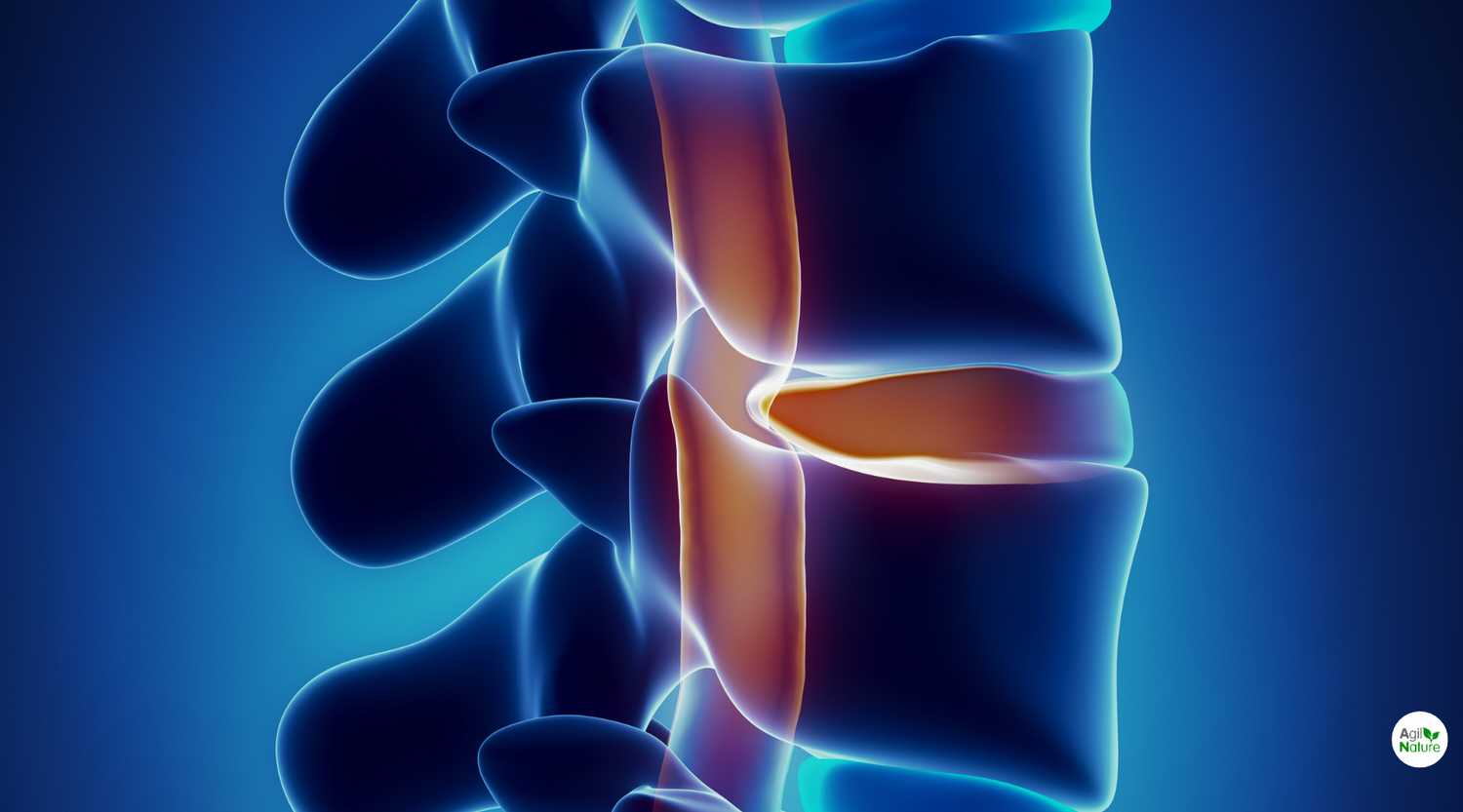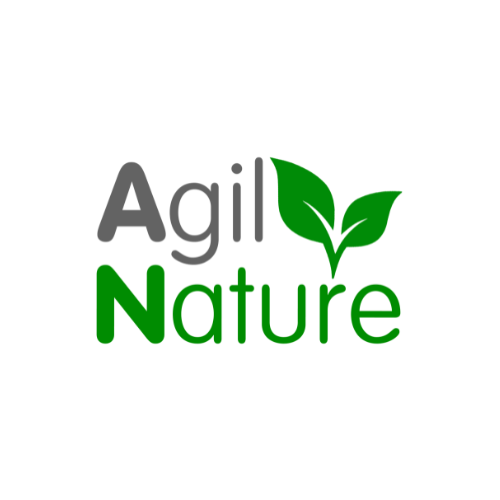
When hip pain is more than just osteoarthritis – How to distinguish spinal stenosis from hip osteoarthritis
hip pain are among the most common reasons for impaired quality of life – especially in adults from middle age onwards. When people experience pain in the hip region, many immediately think of osteoarthritis , particularly coxarthrosis , i.e., wear and tear of the hip joint. However, the hip joint itself is not always the source of the problem. Lumbar spinal stenosis , i.e., a narrowing of the spinal canal in the lumbar spine, can also lead to similar symptoms, which are often misinterpreted.
A differentiated analysis of the causes of hip pain is therefore essential – because both the treatment approach and the therapeutic options differ depending on the cause. Of particular interest is the role that effective Food supplements , a anti-inflammatory diet and preventive measures can play in everyday life in order to sustainably improve mobility and quality of life.
Symptoms of hip pain
The symptoms of hip pain can vary greatly depending on the cause. The most common signs include:
-
Sharp or pulling pain in the groin, buttocks, or side of the hip
-
Restrictions in movement, e.g. when putting on shoes or during everyday activities such as climbing stairs
-
Morning stiffness or pain after prolonged inactivity
-
Pain that radiates into the thigh or even into the knee
-
Discomfort or “falling asleep” of the legs when walking for a longer distance
Symptoms often develop gradually over months or even years. Patients also frequently describe varying pain intensities depending on the time of day, strain, or weather conditions. While osteoarthritis pain occur mainly during exertion and improve at rest, in spinal canal stenosis often the other way around: Here, pain occurs particularly when walking or standing for a long time and subsides when sitting down or bending forward slightly.
Possible causes of hip pain
1. Hip osteoarthritis ( K oxarthrosis ):
Osteoarthritis of the hip joint is a degenerative disease in which the cartilage layer between the joint surfaces gradually breaks down. This leads to friction, inflammation, and ultimately, restricted movement. Osteoarthritis is not merely a "wear and tear" process, but rather an active, inflammatory process that can be accompanied by local pain and systemic changes. Factors such as obesity, lack of exercise, genetic predisposition, or previous joint injuries can contribute to its development.
2. Spinal canal stenosis of the lumbar spine:
This condition causes a narrowing of the spinal canal, usually due to degenerative changes such as disc bulges, arthrosis of the small vertebral joints, or thickened ligaments. This narrowing can compress nerves and cause pain radiating into the buttocks and legs. Particularly insidious is the fact that many patients primarily feel pain in the hip area, even though the problem lies in the spine. A careful neurological examination and imaging are necessary to confirm this differential diagnosis.
3. Soft tissue problems (bursitis, tendinitis, muscular imbalances):
Tendon insertions, bursae, or muscular tension can also cause pain in the hip area. These causes are functional in nature and can often be treated effectively with targeted training, posture correction, or manual therapy. Such complaints are particularly common in people who are physically active or who are subject to one-sided strain.
4. Combination of both diseases:
Osteoarthritis and spinal stenosis often coexist. Especially in older people, degenerative processes in the spine and large joints overlap. These complex cases require a holistic approach and a multimodal treatment concept that must be individually tailored. Interdisciplinary approaches—for example, from orthopedics, physiotherapy, and nutritional medicine—are particularly effective.
Treatment of spinal stenosis
Exercises
Targeted exercise therapy is essential for spinal stenosis. Exercises that strengthen the core muscles , stretch the hip flexors , and stabilize the spine are important . Recommended exercises include:
-
Back training to improve posture and relieve pressure on the vertebral joints
-
Stretching exercises in quadruped position or supine position
-
Mobilization exercises of the lumbar spine in a neutral position
-
Short, frequent exercise units , also integrated into everyday life
-
Walking with a slight forward lean of the upper body , which widens the spinal canal and relieves discomfort
Physiotherapy , manual therapy , heat treatments , or acupuncture can also be helpful in relieving tension and improving mobility. The long-term goal should be to regulate muscle tone, strengthen body awareness, and increase resilience in everyday life.
Dietary supplements & nutrition
An anti-inflammatory diet , along with the targeted intake of certain micronutrients and phytochemicals, can make a decisive contribution to alleviating chronic complaints. Especially in the case of musculoskeletal problems such as osteoarthritis or spinal stenosis, a supportive diet can help regulate inflammatory processes, strengthen connective tissue, and promote general mobility.
From a scientific point of view, the following nutrients have proven to be particularly relevant:
-
Chondroitin sulfate and glucosamine: building blocks of articular cartilage that support its maintenance and regeneration
-
Omega-3 fatty acids (EPA/DHA): Have a strong anti-inflammatory and pain-relieving effect on joint pain
-
Vitamin C : Important for the formation of collagen, an essential structural protein in cartilage, tendons and ligaments
-
Vitamin D and calcium: For the maintenance of healthy bone structures, especially in older people with a lack of exercise
-
Plant substances such as ginger, turmeric and boswellia : Natural anti-inflammatories with good tolerability
Nutrition tips:
-
A plant-based, Mediterranean diet with plenty of vegetables, fruit, legumes, high-quality vegetable oils and fish can have an anti-inflammatory effect.
-
Sugar, white flour and highly processed foods should be reduced as they can have an inflammatory effect.
-
Regular meals , adequate fluid intake and a diet rich in fiber also support intestinal health, which in turn can influence inflammatory processes in the body.
-
Adequate protein intake is essential for the regeneration of tissue and muscles, especially in old age.
-
Weight management also plays a key role – every extra kilo means additional strain on the joints and spine.
Anyone seeking an individualized supply of micronutrients should consult a physician or nutritionist to obtain specific recommendations and consider possible interactions with medications.
When should you seek medical help?
Medical evaluation is essential for chronic or unclear hip pain. Only through targeted diagnostics—ideally using an MRI , X-ray , bone density measurement , or neurological examination —can the exact cause be determined and appropriate treatment initiated. Depending on the severity, conservative methods such as pain management, infiltrations, or physiotherapy may be considered; in advanced cases, surgical procedures such as decompression or stabilization may also be considered. A holistic treatment plan with clear objectives and regular follow-up is essential.
Conclusion
Hip pain is a complex symptom with multiple causes. A differentiated diagnosis is key to effective treatment. Both hip osteoarthritis and spinal stenosis require a holistic approach that combines exercise, targeted nutrition, medical care, and an understanding of the individual triggers.
The combination of physical activity , an anti-inflammatory diet , and targeted micronutrient intake can help relieve chronic pain, reduce inflammation, and maintain long-term joint function. Preventive measures—such as regular exercise, a balanced body weight, and mindful body awareness—are just as important as therapeutic interventions.
It is crucial for those affected to remain active, to clarify complaints early on and to consider holistic measures – for a better quality of life, independence and mobility into old age.
Mobility begins in the core – and is supported by cartilage.
Sources:
-
Paraliov , Anton Tiberiu et al. “Management and Treatment of Coxarthrosis in the Orthopedic Outpatient Clinic.” Current health sciences journal vol. 49.1 (2023): 102-109. doi:10.12865/CHSJ.49.01.102
-
Novelli, Anna et al. “Exploring heterogeneity in coxarthrosis medication use patterns before total hip replacement: a state sequence analysis.” BMJ open vol. 14.9e080348. 17 Sep 2024, doi:10.1136/bmjopen-2023-080348
-
osteoarthritis, Kloppenburg, Margreet et al., The Lancet, Volume 405, Issue 10472, 71 - 85
-
Wei, Ni, and Zhaoli Dai. “The Role of Nutrition in Osteoarthritis: A Literature Review.” Clinics in geriatric medicine vol. 38.2 (2022): 303-322. doi:10.1016/j.cger .2021.11.006
-
Clinical assessment and management of lumbar spinal stenosis: clinical dilemmas and considerations for surgical referral, Anderson, David B et al., The Lancet Rheumatology , Volume 6, Issue 10, e727 - e732
-
Dietary factors and the risk of lumbar spinal stenosis: A case–control analysis from the PREFACE study, Ruggiero, EmiliaLicia Iacoviello, Esposito, VincenzoBonaccio , MarialauraRuggiero , EmiliaCostanzo , SimonaCostanzo , SimonaDe Curtis, AmaliaOlivieri , Marco et al., Nutrition, Metabolism and Cardiovascular Diseases, Volume 32, Issue 1, 90-97
-
Tomkins-Lane CC, Lafave LM, Parnell JA, Krishnamurthy A, Rempel J, Macedo LG, Moriartey S, Stuber KJ, Wilson PM, Hu R, Andreas YM. The spinal stenosis pedometer and nutrition lifestyle intervention (SSPANLI) randomized controlled trial protocol. BMC musculoskeletal Disord . 2013 Nov 14;14:322 . doi : 10.1186/1471-2474-14-322. PMID: 24228747; PMCID: PMC4225754.

